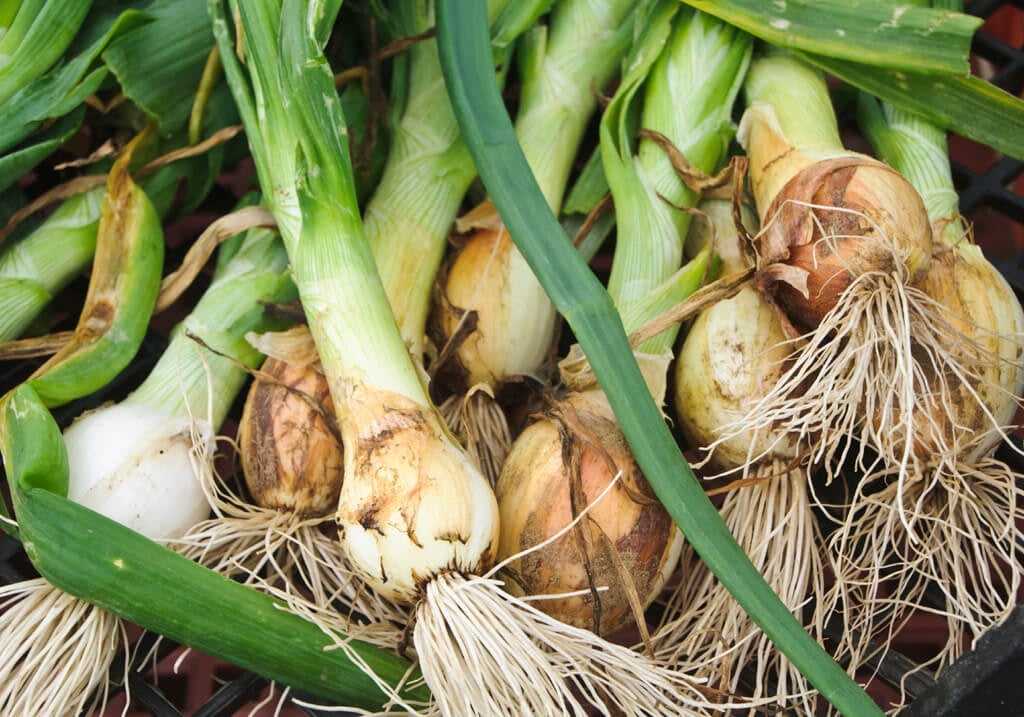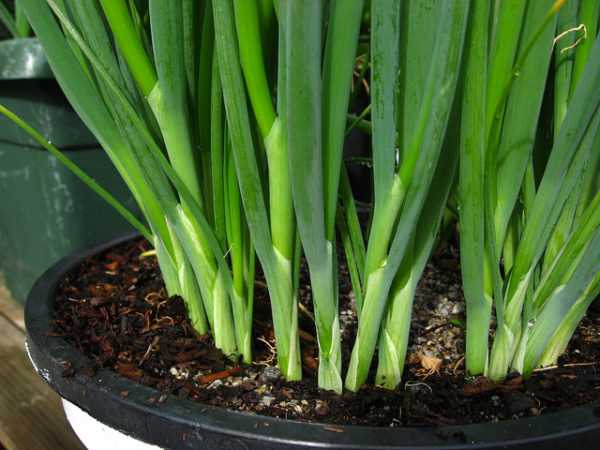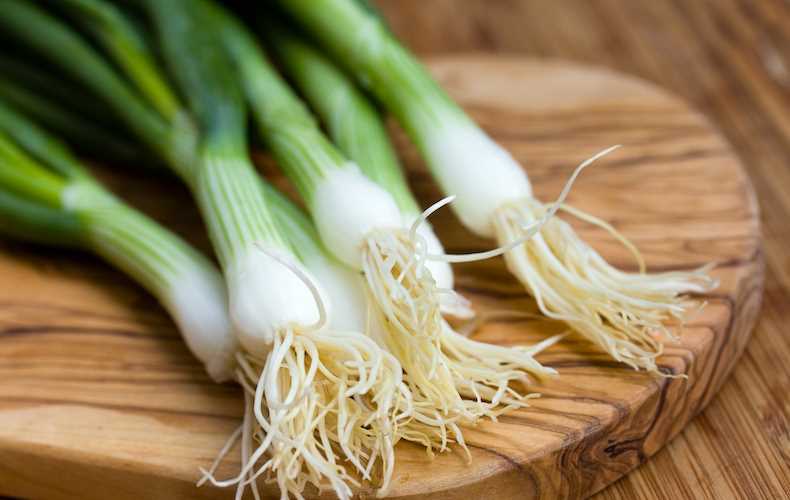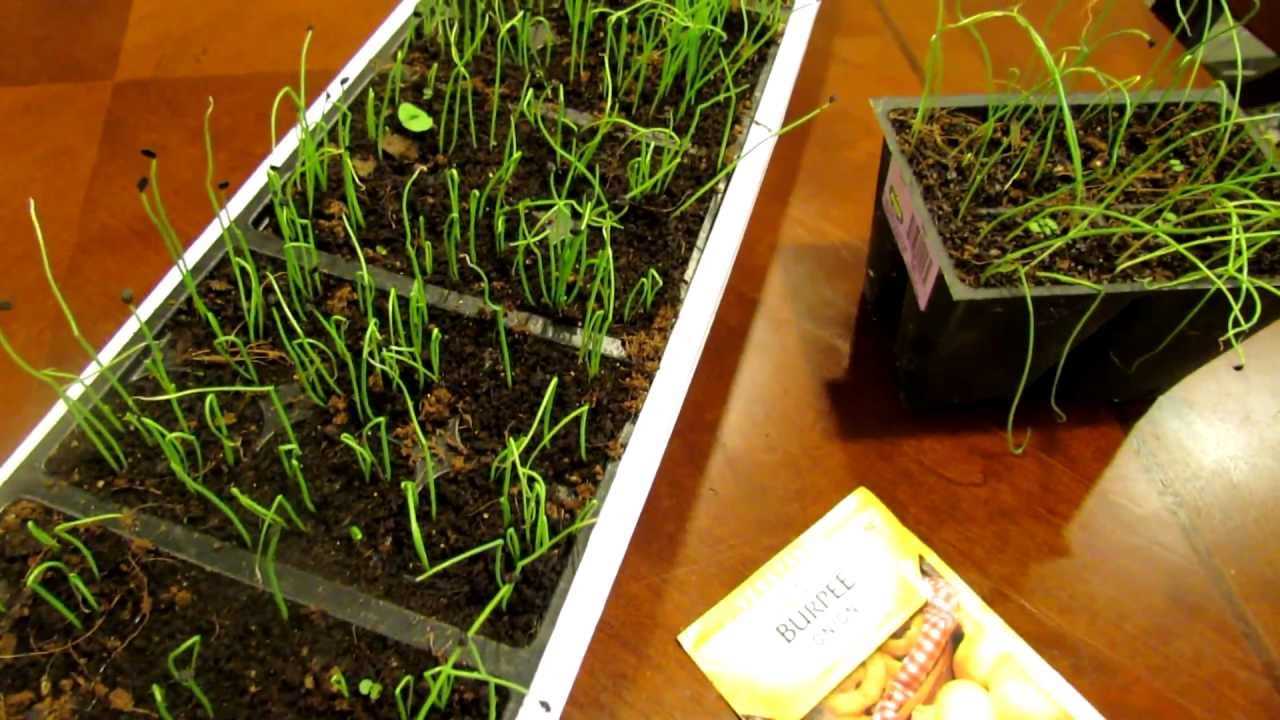- Choosing the Right Seeds for Onion and Leek Seedlings
- Preparing the Soil for Onion and Leek Seedlings
- 1. Choose the Right Location
- 2. Clear the Area
- 3. Test the Soil
- 4. Improve Drainage
- 5. Add Fertilizer
- 6. Prepare the Bed
- 7. Create Rows or Furrows
- 8. Water the Soil
- Sowing Onion and Leek Seeds
- Providing Adequate Watering for Onion and Leek Seedlings
- 1. Consistent Moisture
- 2. Avoid Overwatering
- 3. Water at the Base
- 4. Mulch
- 5. Monitor Weather Conditions
- Providing the Right Amount of Sunlight for Onion and Leek Seedlings
- 1. Place the seedlings in a sunny location
- 2. Rotate the containers or trays
- 3. Avoid overexposure to direct sunlight
- 4. Gradually introduce seedlings to outdoor sunlight
- 5. Monitor seedlings for signs of sunburn
- Protecting Onion and Leek Seedlings from Pests and Diseases
- 1. Start with healthy seedlings
- 2. Provide proper spacing
- 3. Practice crop rotation
- 4. Use organic pest control methods
- 5. Monitor for pests and diseases
- 6. Remove infected plants
- 7. Maintain good hygiene
- 8. Water seedlings properly
- 9. Apply organic fungicides
- 10. Keep a record of pest and disease incidences
- Transplanting Onion and Leek Seedlings
- Caring for Mature Onion and Leek Plants
- 1. Watering
- 2. Mulching
- 3. Fertilizing
- 4. Pruning
- 5. Pest and Disease Control
- 6. Harvesting
- “Question-Answer”
- When should I start onions and leeks from seeds?
- What type of soil should I use for onion and leek seedlings?
- How often should I water onion and leek seedlings?
- Do onion and leek seedlings require any special fertilization?
- What should I do if my onion and leek seedlings become leggy?
- “Video” Growing Top-Quality Leeks From Seed
When it comes to growing onions and leeks from seed, proper care is essential to ensuring strong, healthy plants. These versatile vegetables are a staple in many dishes and can be grown in a variety of climates. Whether you are a seasoned gardener or a beginner, these tips will help you successfully nurture your onion and leek seedlings.
1. Start with quality seeds: Before you even begin planting, it’s important to choose high-quality onion and leek seeds. Look for seeds that are labeled as disease-resistant and have a high germination rate. This will give your seedlings the best chance of growing into robust plants.
2. Provide the right conditions: Onions and leeks prefer to grow in full sun, so make sure they are planted in a location that receives at least six hours of direct sunlight per day. Additionally, these vegetables thrive in rich, well-drained soil. Prior to planting, amend the soil with organic matter, such as compost or aged manure, to provide the necessary nutrients.
3. Keep seedlings moist: Seedlings need to be kept consistently moist, but not waterlogged. Water them regularly, especially during dry periods, to prevent the soil from drying out. Be careful not to overwater, as this can lead to rot or fungal diseases. Using a soaker hose or drip irrigation can help ensure that the water reaches the roots without causing excessive wetness.
4. Thin seedlings: As your seedlings grow, you may need to thin them out to allow for proper spacing. Crowded seedlings can lead to competition for nutrients and stunted growth. Carefully remove the weaker seedlings, leaving the strongest ones spaced about 3 inches apart. This will give them enough room to grow and develop into mature plants.
5. Protect from pests: Onions and leeks are susceptible to a variety of pests, including onion flies, thrips, and onion maggots. To prevent infestations, consider using row covers or insect netting to create a barrier around your seedlings. You can also plant companion plants, such as marigolds or chives, to help deter pests.
Remember, caring for onion and leek seedlings requires attention to detail and consistency. By following these essential tips, you can cultivate strong, healthy plants that will provide you with a bountiful harvest.
Choosing the Right Seeds for Onion and Leek Seedlings
Choosing the right seeds is crucial for growing healthy and productive onion and leek seedlings. Here are some factors to consider when selecting your seeds:
- Variety: There are many different varieties of onions and leeks, each with its own characteristics. Consider factors such as bulb size, flavor, and disease resistance when choosing a variety.
- Seed Quality: Look for seeds that are of high quality. Check the seed packet for information about the germination rate and any disease resistance. It’s best to choose seeds from reputable suppliers to ensure the highest quality.
- Hybrid or Heirloom: Decide whether you want to grow hybrid or heirloom onion and leek varieties. Hybrid varieties are often bred for specific traits, such as disease resistance or uniformity, while heirloom varieties are traditionally passed down through generations and may have unique flavor profiles.
- Planting Method: Consider the planting method you plan to use for your onion and leek seedlings. Some varieties are better suited for direct seeding in the garden, while others are better suited for starting indoors and transplanting.
- Availability: Check the availability of the seeds you want to grow. Some varieties may be more difficult to find, especially if you’re looking for rare or heirloom varieties. Plan ahead and order your seeds early to ensure you get the varieties you want.
By considering these factors, you can choose the right seeds for your onion and leek seedlings, setting them up for success in the garden.
Preparing the Soil for Onion and Leek Seedlings
Before planting onion and leek seedlings, it is important to prepare the soil properly. Proper soil preparation can provide the seedlings with a healthy growing environment and maximize their chances of survival and success. Here are some essential steps for preparing the soil:
1. Choose the Right Location
Select a location for planting onion and leek seedlings that receives full sun and has well-draining soil. Avoid areas that are prone to waterlogging, as this can lead to root rot and other problems.
2. Clear the Area
Remove any weeds, grasses, or debris from the planting area. This will prevent competition for nutrients and reduce the risk of pests and diseases.
3. Test the Soil
Test the soil pH and nutrient levels using a soil testing kit. Onion and leek seedlings prefer slightly acidic soil with a pH of around 6.0 to 7.0. Adjust the pH if necessary by adding lime to raise it or sulfur to lower it.
4. Improve Drainage
If the soil is heavy or clayey, improve drainage by adding organic matter such as compost or well-rotted manure. This will help to break up the soil and improve its structure, allowing water to drain more freely.
5. Add Fertilizer
Apply a balanced fertilizer or a specific vegetable fertilizer according to the recommended dosage on the package. This will provide the seedlings with essential nutrients for healthy growth.
6. Prepare the Bed
Rake the soil to level it and create a smooth surface for planting. Remove any large clumps or rocks that may hinder the growth of the seedlings.
7. Create Rows or Furrows
Create rows or furrows in the prepared bed using a hoe or a rake. Make sure the rows are spaced according to the recommended spacing for onion and leek seedlings.
8. Water the Soil
Thoroughly water the soil before planting the seedlings. This will help to settle the soil and provide moisture for the young plants.
By following these steps, you can prepare the soil for onion and leek seedlings and provide them with the best possible growing conditions. Proper soil preparation is essential for healthy plant development and a successful harvest.
Sowing Onion and Leek Seeds
Sowing onion and leek seeds is the first step in growing healthy and productive plants. Here are some essential tips to help you sow your seeds successfully:
- Timing: Sow onion and leek seeds indoors 8-10 weeks before the last expected frost date in your area. This will give the seeds enough time to germinate and develop into strong seedlings before transplanting them outdoors.
- Container: Use seed trays, pots, or cell flats with drainage holes to sow the seeds. Make sure the containers are clean and sterilized to prevent disease. You can also use biodegradable peat pots, which can be planted directly in the ground without disturbing the roots.
- Seed Depth: Sow onion and leek seeds at a depth of ¼ to ½ inch (6-12 mm). Cover the seeds lightly with fine soil or vermiculite, as they require darkness to germinate.
- Soil Mix: Use a well-draining seed starting mix or make your own by combining equal parts of peat moss, perlite, and vermiculite. Avoid using garden soil, as it can be heavy and retain too much moisture, causing the seeds to rot.
- Moisture: Keep the soil consistently moist but not waterlogged. Use a spray bottle or misting wand to water the seeds gently to avoid displacing them. You can cover the containers with a plastic dome or wrap them in plastic wrap to maintain humidity.
- Temperature: Onion and leek seeds germinate best at a temperature of 60-70°F (15-21°C). Place the containers in a warm location, such as near a heating mat or on top of a refrigerator.
- Light: Provide 12-14 hours of bright light per day to the seedlings. You can use fluorescent lights or grow lights positioned 2-4 inches (5-10 cm) above the plants. If you don’t have access to artificial light, place the seedlings near a south-facing window.
- Thinning: Once the seedlings have developed their first true leaves, thin them to provide enough space for growth. Leave the strongest seedling in each cell or pot and remove the rest by gently pulling them out or cutting them with scissors at the soil level.
- Hardening Off: About a week before transplanting the seedlings outdoors, gradually acclimate them to outdoor conditions. Start by placing them outdoors in a sheltered area for a few hours each day, gradually increasing the exposure over the week.
- Transplanting: When the soil has warmed up and all chance of frost has passed, transplant the onion and leek seedlings into the garden. Space them according to the recommended spacing for each variety. Water the transplanted seedlings well and keep the soil consistently moist until they are established.
By following these tips, you can ensure the successful sowing of your onion and leek seeds, setting the stage for healthy and abundant harvests later on.
Providing Adequate Watering for Onion and Leek Seedlings
Watering is an essential part of caring for onion and leek seedlings. Providing them with adequate water will help them establish strong root systems and grow into healthy plants. Here are some important tips for watering your onion and leek seedlings:
1. Consistent Moisture
Onion and leek seedlings prefer consistent moisture in their growing medium. Make sure to keep the soil evenly moist, but not overly saturated. Avoid letting the soil dry out completely between waterings, as this can stress the seedlings.
2. Avoid Overwatering
While it’s important to keep the soil consistently moist, overwatering can be detrimental to onion and leek seedlings. Excess water can lead to root rot and other fungal diseases. To prevent overwatering, check the moisture level of the soil before watering and adjust your watering schedule accordingly.
3. Water at the Base
When watering onion and leek seedlings, it’s best to water at the base of the plants rather than overhead. Watering from the base helps prevent moisture from collecting on the leaves, which can increase the risk of fungal diseases. Use a watering can or hose with a gentle spray attachment to water directly at the soil level.
4. Mulch
Applying a layer of organic mulch around the onion and leek seedlings can help retain moisture in the soil and reduce the need for frequent watering. Mulch also helps suppress weed growth, which can compete with the seedlings for water and nutrients.
5. Monitor Weather Conditions
Keep an eye on weather conditions in your area, as they can affect the watering needs of onion and leek seedlings. Hot and dry weather may require more frequent watering, while cool and rainy weather may require less. Adjust your watering schedule accordingly to ensure the seedlings receive the optimal amount of moisture.
By following these tips, you can provide your onion and leek seedlings with adequate watering, promoting their growth and ensuring their overall health.
Providing the Right Amount of Sunlight for Onion and Leek Seedlings
Proper sunlight exposure is crucial for the healthy growth and development of onion and leek seedlings. Here are some tips to ensure they receive the right amount of sunlight:
1. Place the seedlings in a sunny location
Find a location in your garden that receives full sun for most of the day. This will ensure that the seedlings receive the optimal amount of sunlight required for their growth. Choose a spot that is not shaded by tall trees or buildings.
2. Rotate the containers or trays
If you are growing the seedlings in containers or trays, rotate them regularly to ensure even exposure to sunlight. This will prevent the seedlings from leaning towards the light and becoming unevenly shaped.
3. Avoid overexposure to direct sunlight
While seedlings need sunlight, they can also be sensitive to intense or prolonged exposure. If the weather is extremely hot or the sun is particularly strong, provide some shade or dappled sunlight to protect the seedlings. You can use shade cloth or create a temporary shade structure using a light fabric or netting.
4. Gradually introduce seedlings to outdoor sunlight
If you started your onion and leek seedlings indoors, they will need to be gradually introduced to outdoor sunlight. Begin by placing them in a shaded area outdoors for a few hours each day, gradually increasing their exposure to direct sun over the course of a week. This will help them acclimate to the outdoor conditions.
5. Monitor seedlings for signs of sunburn
Overexposure to sunlight can result in sunburned seedlings. Watch out for signs such as wilting, yellowing, or brown spots on the leaves. If you notice any of these symptoms, provide more shade or reduce their exposure to direct sunlight.
Remember, finding the right balance of sunlight for your onion and leek seedlings is essential for their healthy growth. With the proper amount of sunlight, they will thrive and be ready for transplanting into your garden.
Protecting Onion and Leek Seedlings from Pests and Diseases

Pests and diseases can pose a significant threat to the health and productivity of onion and leek seedlings. Taking preventive measures and implementing proper care techniques can help protect seedlings and ensure their successful growth. Here are some essential tips to protect onion and leek seedlings from pests and diseases:
1. Start with healthy seedlings

It is crucial to start with healthy seedlings to minimize the risk of pests and diseases. Choose seedlings that are free from any signs of damage or disease, and buy them from reputable sources.
2. Provide proper spacing
Ensure that seedlings are properly spaced to allow for adequate air circulation. Crowded seedlings can create a favorable environment for the development of diseases.
3. Practice crop rotation
Rotate onion and leek crops to different areas of the garden each year. This helps prevent the buildup of pests and diseases in the soil.
4. Use organic pest control methods
Consider using organic pest control methods such as companion planting, which involves planting beneficial companion plants alongside onions and leeks to deter pests. You can also use natural pest repellents like neem oil or insecticidal soap.
5. Monitor for pests and diseases
Frequently inspect your onion and leek seedlings for any signs of pests or diseases. Early detection allows for prompt treatment and prevents the spread of infestations.
6. Remove infected plants
If any of your seedlings show signs of disease, promptly remove and destroy them to prevent the spread to other healthy plants.
7. Maintain good hygiene
Keep your gardening tools and equipment clean and disinfected to prevent the spread of diseases. Also, practice good hygiene by washing your hands thoroughly before handling seedlings.
8. Water seedlings properly
Avoid overwatering your seedlings as this can lead to fungal diseases. Water them at the base of the plants and try to keep the foliage dry.
9. Apply organic fungicides
If fungal diseases become a problem, you can apply organic fungicides to protect your seedlings. Examples of organic fungicides include copper-based sprays and sulfur-based products.
10. Keep a record of pest and disease incidences
Keep a record of any pest or disease incidences you encounter. This will help you identify any recurring issues and adjust your growing methods accordingly.
By following these tips, you can protect your onion and leek seedlings from pests and diseases, helping them grow into healthy and productive plants.
Transplanting Onion and Leek Seedlings
Transplanting onion and leek seedlings is a crucial step in their growth journey. It is important to handle the seedlings with care to ensure they continue to thrive in their new environment. Here are some essential tips for transplanting onion and leek seedlings:
- Choose the right time: It is important to transplant onion and leek seedlings at the right time. Generally, seedlings should be transplanted when they have reached a height of around 4-6 inches and have developed a solid root system. This usually occurs 3-4 weeks after germination.
- Prepare the transplant area: Before transplanting, prepare the area where the seedlings will be planted. Choose a location with well-draining soil and ample sunlight. Remove any weeds or debris from the area and amend the soil if necessary.
- Water the seedlings: Before transplanting, thoroughly water the seedlings to ensure they’re adequately hydrated. This will help reduce the stress of transplant shock.
- Space the seedlings: When transplanting onion and leek seedlings, make sure to space them properly to allow for proper growth. Onion seedlings should be spaced 4-6 inches apart, while leek seedlings should be spaced 6-8 inches apart.
- Dig holes: Dig holes in the prepared transplant area that are slightly larger than the root system of the seedlings.
- Transplanting: Gently remove each seedling from its container and carefully place it in the corresponding hole. Ensure that the root system is not damaged during the process.
- Backfill and water: Once the seedlings are in place, backfill the holes with soil, gently firming it around the base of the seedlings. Water the newly transplanted seedlings thoroughly to help settle the soil and minimize transplant shock.
- Mulching: Consider applying a layer of organic mulch around the seedlings to help regulate soil moisture and suppress weed growth.
- Maintain proper care: After transplanting, continue to provide proper care to the onion and leek seedlings. This includes regular watering, providing adequate sunlight, and protecting the seedlings from pests and diseases.
Following these tips will help ensure the successful transplanting of onion and leek seedlings, setting them up for healthy growth and eventual harvest.
Caring for Mature Onion and Leek Plants
Once your onion and leek plants have matured, there are several important care tips to keep in mind in order to ensure a successful harvest:
1. Watering
Provide your mature onion and leek plants with consistent moisture. Onions and leeks require regular watering, especially during dry spells, to maintain their growth and bulb development. Be careful not to overwater, as this can lead to rot or disease. Water deeply, ensuring the water reaches the roots, and avoid watering in the evening to prevent moisture-related diseases.
2. Mulching
Apply a layer of mulch around your onion and leek plants to help conserve moisture, suppress weed growth, and regulate soil temperature. This can be in the form of straw, shredded leaves, or compost. Mulching also helps to protect the roots and bulbs, preventing damage from extreme temperature fluctuations.
3. Fertilizing
Onion and leek plants benefit from regular fertilization to promote healthy growth and bulb development. Apply a balanced fertilizer, such as a 10-10-10 or 14-14-14 blend, following the instructions on the package. Avoid over-fertilizing, as this can result in excessive foliage growth at the expense of bulb development.
4. Pruning

Remove any yellowing or dead leaves from your onion and leek plants to maintain their overall health and appearance. This also helps improve airflow around the plants, reducing the risk of fungal diseases. Avoid pruning too many leaves at once, as this can stress the plants.
5. Pest and Disease Control

Monitor your onion and leek plants regularly for signs of pests or diseases. Common pests include onion flies, thrips, and aphids, while common diseases include downy mildew and onion white rot. Use organic pest control methods or consult a gardening professional for advice on appropriate treatment options.
6. Harvesting
Harvest your onions and leeks when they have reached the desired size and have developed firm bulbs. For onions, watch for the tops to start to yellow and fall over. Carefully lift the plants from the ground and allow them to dry in a well-ventilated area before storing. Leeks can be harvested when they have reached the desired diameter, typically around 1-2 inches, by gently loosening the soil around the base of the plant and pulling them out.
By following these essential care tips for mature onion and leek plants, you can enjoy a bountiful harvest of flavorful and nutritious vegetables.
“Question-Answer”
When should I start onions and leeks from seeds?
You should start onions and leeks from seeds about 8 to 12 weeks before the last expected frost date in your area.
What type of soil should I use for onion and leek seedlings?
You should use a well-draining soil mix that is rich in organic matter.
How often should I water onion and leek seedlings?
You should water onion and leek seedlings regularly, keeping the soil evenly moist but not waterlogged.
Do onion and leek seedlings require any special fertilization?
Onion and leek seedlings benefit from a balanced fertilizer high in phosphorus and potassium.
What should I do if my onion and leek seedlings become leggy?
If your onion and leek seedlings become leggy, you can bury them deeper when transplanting them, or use a fan to provide air movement and strengthen the seedlings.







